#schooner nelson
Text
The remains of the Schooner Nelson at the bottom of Lake Superior
The Nelson was a large three-masted schooner commissioned in 1866 and used for freight transport across the lake. In the spring of 1899, the Nelson was in tow of the steamer Folsom along with the schooner Mary B. Mitchell. They were on their way to the Keweenaw Peninsula in Michigan. As a northwesterly storm with freezing rain and strong winds hit them, and soon thick ice formed on the decks of the ships.

Part of the hull with the name on it (x)
Captain A. E. White of the Folsom, knowing this would be dangerous for all three, attempted to steer the ships into Whitefish Bay when he saw the Nelson's tow rope detach and the schooner sink rapidly. There was only one survivor among the 10 people on the Nelson.
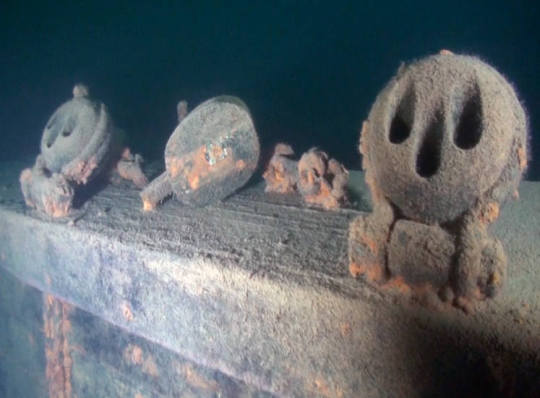
Dead Eyes (x)
What happened to them was reported by the Executive Director of the Great Lakes Shipwreck Historical Society, Bruce Lynn : "This is a particularly tragic shipwreck. Captain Haganey of the Nelson remained aboard his sinking vessel to lower the lifeboat, which contained the crew, his wife and infant child. After lowering, Captain Haganey jumped overboard to reach the lifeboat himself.

The wheel (x)
As he landed in the water, he saw the stern of his vessel rise as the vessel dived to the bottom. The line was still connected to the lifeboat, which took his crew and family with the sinking ship. Captain Haganey was the only survivor and later struggled ashore to the Deer Park Life-Saving Station where he was nursed back to health.“
Whether he ever recovered from this fate is not known. However, the wreck was long thought to be lost until she was finally found in 2014 and presented to the divers in very good condition.
67 notes
·
View notes
Text
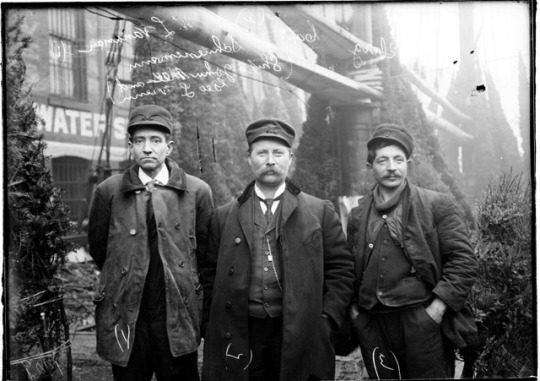

Christmas Tree Ghost Ship
From 1898 to 1912 Herman Schuenemann was the Captain of the wooden schooner Rouse Simmons.
Captain Schuenemann was considered as much a part of Chicago’s Christmas as Santa Claus because his ship was better known as the “Christmas Tree Ship.”
Every November he would set sail on Lake Michigan from Thompson with a full cargo of spruces, pines and balsams piled high.
As Schuenemann reached his destination– he would steer the Rouse Simmons down the Chicago River and up to the Clark Street Bridge were thousands of waving Chicagoans would wait in anticipation.
Once the ship had docked, people swarmed onboard to choose a Christmas tree. They cost 50 cents to a dollar.
“Chicago’s Yuletide season began when the Christmas Tree Ship arrived with evergreens lashed to her masts and rigging… Her skipper would welcome throngs of Chicagoans aboard as soon as the ship’s moorings were secure. Whole families would hurry to the dock to get the pick of the crop. Many wandered on deck to watch the Captain’s daughter, Elsie, weave pine branches into wreaths, which were also for sale.”
–Reminiscences of Phil Sanders when he was a boy.
Herman Scheuenemann and his brother August before him– from 1876-to 1898– always made sure no one left without a tree. Both brothers gave away hundreds of trees to needy families, churches and orphanages.
August was carrying a load of trees to Chicago when his ship went down in 1898 in one of Lake Michigan’s fierce November gales. His brother, Herman made another trip just two weeks later determined Chicago would have its Christmas trees that year.
Unfortunately, fourteen years later Herman would suffer the same fate.
Lake sailors as well as ocean sailors are a superstitious lot–they have to be. Generations of “old salts” pass down what a sailor needs to be aware of–this includes everything that happens on and around their ships.
Captain Schuenemann was a competent and cautious sailor but for some reason he ignored a significant number of ominous warnings in November of 1912.
He was planning to sail from Thompson, Michigan on a Friday with a large cargo of trees despite severe storm warnings. His crew was nervous for there was an obvious storm brewing and the captain wanted to start their journey on a Friday.
Sailors considered it extremely unlucky to begin a voyage on a Friday. In the 1800s the British Navy was so annoyed by this superstition they purposefully launched a new ship called HMS Friday on a Friday.
Needless to say this ship and its crew were never seen again.
Captain Charles Nelson, Herman’s partner who had been a lake captain for 50 years tried to persuade Herman to delay but he could not convince him. Herman didn’t want to take the risk of being iced into the harbor and having his ship dashed against the docks by gale-force winds.
Schuenemann then ignored several more bad omens. Just before the schooner left the harbor several sailors watched in horror as droves of rats fled the ship. This is believed to be a sign a ship is in imminent danger.
Three crew members afraid now left the Rouse Simmons forfeiting their pay. This left just 13 crewmembers on the ship. Sailing with thirteen crewmembers was considered to be as dangerous as starting a voyage on a Friday.
Ships at the time nailed a horseshoe to the side of their vessels for good luck. Just as on land it is considered bad luck if these horseshoes are hung upside down–all the luck will run out.
As the Rouse Simmons set sail, the horseshoe that was hung on its side was loosened by strong winds. It was now hanging upside down on a single nail.
Captain Schuenemann left the harbor on November 22nd and sailed right into the now infamous Big Storm of 1912.
The temperature immediately dropped from 40 degrees to below freezing. Rain turned to snow and ice, which coated the ships’ rigging, sails and spars–and the Christmas trees that were on deck.
The next day witnesses in Kewaunee, Wisconsin saw the Rouse Simmons pass by flying her distress signals. They wondered why the ship with its tattered sails did not just stop but instead sailed into a blinding snowstorm.
“The Two Rivers Life Saving Crew was informed of the ships’ distress signals and set out in search of the schooner but it was never found.”
–From an article in the Chronicle of Two Rivers
This mystery was not solved until 1971 when the wreck of the Rouse Simmons was found at the bottom of Lake Michigan.
Its wheel was missing so the experts concluded that the ships enormous cargo of Christmas trees had basically turned into ice blocks on deck, which then slid into the wheel leaving the captain unable to control the ships’ course.
One popular sailor superstition is that when a ship’s bells are heard ringing of their own accord, as in a storm, this foretells death.
In the days after the Rouse Simmons was lost several people near Two Rivers, Wisconsin reported hearing phantom bells and phantom cries in the wind.
A ghost ship has also been seen through the years. It is often spotted on Christmas Eve and Christmas Day gliding in the waters near Two Rivers. People have watched as it just vanishes into a mist.
#Christmas Tree Ghost Ship#ghost and hauntings#paranormal#ghost and spirits#haunted locations#haunted salem#myhauntedsalem#ghost ship
42 notes
·
View notes
Text
Joy Rides Through the Tunnel of Grief by Jessica Hendry Nelson: Book Review
Jessica Hendry Nelson is an award-winning author and Assistant Professor in higher ed. Readers may recognize her from her debut novel and other work. She has been featured in The Threepenny Review, Prairie Schooner, North American Review, Tin House, The Los Angeles Review of Books, and more. Now she’s back with another memoir. Joy Rides Through the Tunnel of Grief by Jessica Hendry Nelson is…

View On WordPress
0 notes
Text

HMS Pickle: Bringer of News - by artist Richard Grenville
A topsail schooner, she was the smallest ship at Trafalgar. Too small to take part in the fighting she was chosen to bring news of the victory and of Nelson's death back to Britain.
She also participated in a notable single-ship action when she captured the French privateer Favorite in 1807. Pickle was wrecked in 1808, but without loss of life.
Sources: Philip K Allan, wikipedia
23 notes
·
View notes
Photo

Slave Ships
Slave ships were large cargo ships specially converted for the purpose of transporting slaves. Such ships were also known as "Guineamen" because the trade involved human trafficking to and from the Guinea coast in West Africa.
Atlantic slave trade
In the early 1600s, more than a century after the arrival of Europeans to the Americas, demand for unpaid labor to work plantations made slave-trading a profitable business. The peak time of slave ships to the Atlantic passage was between the 18th and early-19th centuries, when large plantations developed in the southern colonies of North America.
To ensure profitability, the owners of the ships divided their hulls into holds with little headroom, so they could transport as many slaves as possible. Unhygienic conditions, dehydration, dysentery and scurvy led to a high mortality rate, on average 15% and up to a third of captives. Often the ships carried hundreds of slaves, who were chained tightly to plank beds. For example, the slave ship Henrietta Marie carried about 200 slaves on the long Middle Passage. They were confined to cargo holds with each slave chained with little room to move.
The most significant routes of the slave ships led from the north-western and western coasts of Africa to South America and the south-east coast of what is today the United States, and the Caribbean. As many as 20 million Africans were transported by ship. The transportation of slaves from Africa to America was known as the Middle Passage of the triangular trade.
Conditions On Slave Ships
Enslaved People
The Slave Trade Act 1788, also known as Dolben's Act, regulated conditions on board British slave ships for the first time since the slave trade started. It was introduced to the United Kingdom parliament by Sir William Dolben, an advocate for the abolition of slavery. For the first time, limits were placed on the number of enslaved people that could be carried. Under the terms of the act, ships could transport 1.67 slaves per ton up to a maximum of 207 tons burthen, after which only one slave per ton could be carried. The well-known slave ship Brookes was limited to carrying 454 people; it had previously transported as many as 609 enslaved. Olaudah Equiano was among the supporters of the act but it was opposed by some abolitionists, such as William Wilberforce, who feared it would establish the idea that the slave trade simply needed reform and regulation, rather than complete abolition. Slave counts can also be estimated by deck area rather than registered tonnage, which results in a lower number of errors and only 6% deviation from reported figures.
This limited reduction in the overcrowding on slave ships may have reduced the on-board death rate, but this is disputed by some historians
Sailors and crew
In the 18th and early 19th centuries, the sailors on slave ships were often poorly paid and subject to brutal discipline and treatment. Furthermore, a crew mortality rate of around 20% was expected during a voyage, with sailors dying as a result of disease, flogging or slave uprisings. While conditions for the crew were far better than those of the enslaved people, they remained harsh and contributed to a high death rate. Sailors often had to live and sleep without shelter on the open deck for the entirety of the Atlantic voyage as the space below deck was occupied by slaves.
Disease, specifically malaria and yellow fever, was the most common cause of death among sailors. A high crew mortality rate on the return voyage was in the captain's interests as it reduced the number of sailors who had to be paid on reaching the home port. Crew members who survived were frequently cheated out of their wages on their return. These aspects of the slave trade were widely known; the notoriety of slave ships amongst sailors meant those joining slave ship crews did so through coercion or because they could find no other employment. This was often the case for sailors who had spent time in prison.
Abolition of the slave trade
The African slave trade was outlawed by the United States and the United Kingdom in 1807. The applicable UK act was the Abolition of the Slave Trade Act and outlawed the slave trade throughout the British Empire. The US law took effect on 1 January 1808. After that date, all US and British slave ships leaving Africa were legally pirate vessels subject to capture by the United States Navy or Royal Navy. In 1815, at the Council of Vienna, Spain, Portugal, France, and the Netherlands also agreed to abolish their slave trade. Between 1807 and 1860 British vessels would capture slave ships and free the slaves; they captured 1,600 ships and freed 160,000 slaves in this time.
After abolition, slave ships adopted quicker, more maneuverable forms to evade capture by naval warships, one favorite form being the Baltimore Clipper. Some had hulls fitted with copper sheathing. This was very expensive work that at this time was only commonly done to Royal Navy vessels; however, it increased speed by preventing the growth of marine weed on the hull, which would otherwise cause drag. The speed of slave ships made them attractive ships to repurpose for piracy, and also made them attractive for naval use after capture; USS Nightingale and HMS Black Joke were examples of such vessels. HMS Black Joke had a notable career in Royal Navy service and was responsible for capturing a number of slave ships and freeing many hundreds of slaves.
There have been attempts by descendants of African slaves to sue Lloyd's of London for playing a key role in underwriting insurance policies taken out on slave ships bringing slaves from Africa to the Americas.
List of Slave Ships
Antelope, Spanish slave ship captured near Florida in 1820 with 283 slaves aboard, leading to The Antelope case.
Aurore, along with Duc du Maine, the first French slave ships that brought the first slaves to Louisiana.
La Amistad, general-purpose cargo ship that also carried slaves on occasion. A successful slave revolt on ship gave rise to a case that reached the Supreme Court in United States v. The Amistad.
Brookes, sailing in the 1780s.[25]
City of Norfolk, fitted out in New York City by Albert Horn.[26]
Clotilda, burned and sunk at Mobile, in 1859 or 1860.
Cora, captured by USS Constellation in 1860.
Creole, involved in the United States coastwise slave trade and the scene of a slave rebellion in 1841, leading to the Creole case.
Desire, first American slave ship.[27]
Duc du Maine, along with Aurore, the first French slave ships that brought the first slaves to Louisiana.
Elisabeth, sailing from Jamaica for West Africa.[citation needed]
Erie, the ship owned and captained by Nathaniel Gordon, the only American executed for slave trading
Esmeralda, captured 1 November 1864 off Loango, West Coast of Africa, by HMS Rattler (1864) and Taken to St. Helena to prize court by C.G. Nelson midshipman in command.[citation needed]
Fredensborg, Danish slave ship, sank in 1768 off Tromøya in Norway, after a journey in the triangular trade. Leif Svalesen [da] wrote a book about the journey.
Gallito, Spanish slave ship carrying 136 Africans when captured by HMS Nimble 16 November 1829.
Guerrero, Spanish slave ship wrecked in the Florida Keys in 1827 carrying 561 Africans.
Hannibal, an English slaver of the Atlantic slave trade.
The Hawk, The Hawk sailed for Calabar, with instructions to buy 340 slaves.[28]
Hebe, Portuguese slave ship carrying 401 Angolans when captured by HMS Nimble 13 July 1832.
Henrietta Marie, sank in 1700 near Marquesas Keys, Florida, excavated in 1980s.
Hermosa, a schooner whose 1840 grounding in the Bahamas led to a controversy between the US and Britain over the 38 slaves who had been on board the ship.
Hope, American brig that brought slaves to Rhode Island
Isabella, British slave ship that brought the first 150 African slaves to the American port of Philadelphia in 1684.
Joaquina, Spanish slave ship carrying 348 Africans when captured by HMS Nimble 10 November 1833.
Josefa, Spanish schooner carrying 206 slaves when captured by HMS Monkey 7 April 1829.
Jesus of Lübeck, a 700-ton ship used on the second voyage of John Hawkins to transport 400 captured Africans in 1564. Queen Elizabeth I was his partner and rented him the vessel.
King David, sailing from St Christophers, on St Kitts in the Caribbean 1749.[29]
La Concord, a slave ship captured by the pirate Blackbeard (Edward Teach), used as his flagship and renamed Queen Anne's Revenge. Run aground in June 1718.
La Negrita, Spanish slave ship carrying 189 Africans when captured by HMS Nimble May 1833.
Lord Ligonier. See Roots: The Saga of an American Family by Alex Haley.
Don Francisco, a slave ship captured in 1837. Sold as a colonial trader and renamed James Matthews. Excavated by Western Australian Museum in 1974.
Madre de Deus, 1567. John Hawkins captured this ship and transported 400 Africans.
Manuela, built as clipper ship Sunny South, captured by HMS Brisk in Mozambique Channel with over 800 slaves aboard.
Manuelita, Spanish slave ship carrying 485 Africans when captured by HMS Nimble 7 December 1833.
Margaret Scott, confiscated and sunk as part of the Stone fleet in 1862
Meermin, a Dutch East India Company ship active between southern Africa and Madagascar, whose final voyage in 1766 ended in mutiny by the slaves: around half the crew and nearly 30 Malagasy died, and the ship was destroyed.[30]
Midas, 360-ton Spanish slave ship captured by HMS Monkey 27 June 1829. Midas had left Africa in April 1829 with 562 Africans, but only 369 were still alive when she was captured, and 72 more died of "smallpox, diarrhea & scurvy" before Monkey and HMS Nimble could take Midas into Havana.[31]
Nightingale, clipper ship captured by Saratoga near Cabinda, Angola in 1861 with 961 slaves aboard.
Pons, American-built barque captured by USS Yorktown on 1 December 1845 with 850–900 slaves.[32]
Providencia, Spanish brig carrying 400 slaves when captured by HMS Monkey in 1829.
São José Paquete Africa, a Portuguese slave ship which sank off the coast of South Africa in 1794 killing over 200 of the enslaved men and women.
Tecora, Portuguese slave ship that transported the slaves who would later revolt aboard La Amistad.
Triton captured by USS Constellation in 1861.[citation needed]
Trouvadore, wrecked in Turks and Caicos 1841. 193 slaves survived. Project commenced in 2004 to locate the ship.[33]
Wanderer, formerly last slave ship to the U.S. (November 1858) until Clotilda reported in 1859 or 1860.
Wildfire, a barque, arrested off the Florida coast by the US Navy in 1860; carrying 450 slaves.[34]
Whydah Gally, a ship that transported cargo, passengers, and slaves. Captured by the pirate Captain Samuel "Black Sam" Bellamy and used for piracy, eventually grounded during a Nor'easter at Cape Cod and sunk in April 1717.
Zong , a British slave ship infamous for the1781 massacre of 132 sick and dying slaves who were thrown overboard in an attempt to guarantee that the ship's owners could collect on their cargo insurance.
Source: Wikipedia / Slave ships
#slavery#slave ship#concept art#racism#neocolonialism#capitalism#white supremacy#info#information#resources#education
162 notes
·
View notes
Note
hi! do you have any favorite quotes about the ocean/sea or like the stars/cosmos?
on the sea:
“The sea is the element of love.”
— Agnès Varda
“I never was a child
I was pulled right out of the sea
And the salt, it never left my body”
— Chelsea Wolfe, “They’ll Clap When You’re Gone”
“This is the end, isn’t it?
And you are here with me again, listening with me: the sea
no longer torments me; the self
I wished to be is the self I am.”
— Louise Glück, “Otis”
“Who can face the sea and not inherit its loneliness?”
— Olin Ivory, “Bad Year Anthem”
“I live; I die; the sea comes over me; it’s the blue that lasts.”
— Virginia Woolf, Melymbrosia
“She had the sea within her soul, continuously.”
— Salvatore Quasimodo, “The Tall Schooner”
“There is no more of me in your body
Than the little salt tears you are frightened of shedding.
What can you know of my love on your brown rock pillow...
Come closer.”
— Katherine Mansfield, “Sea”
“The sea; I didn’t lose myself in it. I found myself in it.”
— Albert Camus
on stars:
“The stars are set alight in heaven so that one day each one of us may find his own again.”
“If someone loves a flower of which just one example exists among all the millions and millions of stars, that’s enough to make him happy when he looks at the stars. He tells himself ‘My flower’s up there somewhere…’ But if the sheep eats the flower, then for him it’s as if, suddenly, all the stars went out. And that isn’t important?”
“All men have stars, but they are not the same things for different people. For some, who are travelers, the stars are guides. For others they are no more than little lights in the sky. For others, who are scholars, they are problems… But all these stars are silent. You alone will have stars as no one else has them… In one of the stars I shall be living. In one of them I shall be laughing. And so it will be as if all the stars will be laughing when you look at the sky at night. You, only you, will have stars that can laugh!”
— Antoine de Saint-Exupéry, Le Petit Prince
“Looking at the stars always makes me dream.”
— Vincent Van Gogh
“I have loved the stars too fondly to be fearful of the night.”
— Sarah Williams, “The Old Astronomer to his Pupil”
“as he stares into the sky, there are
twice as many stars as usual.”
— Laura Gilpin, “Two-Headed Calf”
“Can you imagine? What would it be like if we had more than one moon? I think I like it as it is, not too crowded and not too lonely.”
— Maggie Nelson, “Birthday Poem”
#w#compilation#louise glück#agnès varda#antoine de saint exupéry#maggie nelson#katherine mansfield#virginia woolf#I never was a child I was pulled right out of the sea
123 notes
·
View notes
Text
Sydney’s oldest continually licensed hotel is the Lord Nelson Hotel, and it’s not just a pub, it’s a brewery. Located in The Rocks, it’s a good place for a schooner (a 425ml glass in NSW).
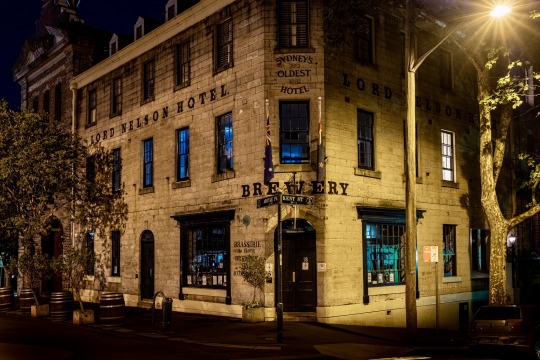
3 notes
·
View notes
Text
Nelson in the War of American Independence:
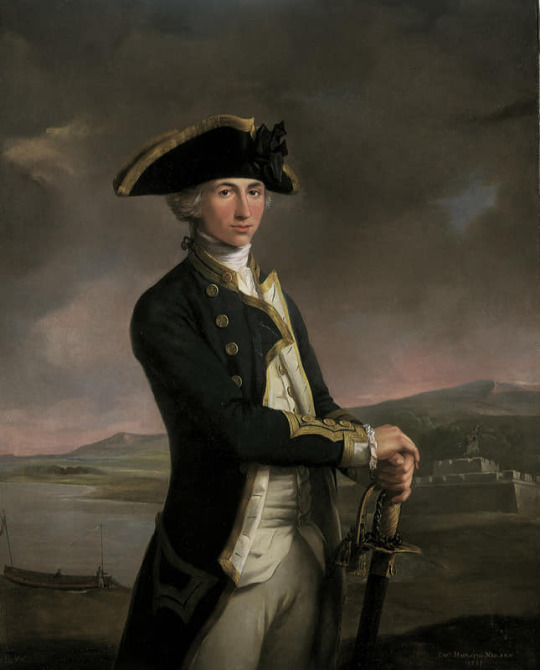
Captain Nelson in 1782, painted by John Francis Rigaud.
“In 1782, twenty-three-year-old Captain Nelson was commanding his third post-ship, a former French prize named Albemarle. She was a top-heavy tub; a twenty-eight-gun frigate that looked like a store-ship, and probably had been in her previous existence. Nelson patrolled the northeastern coast of the United States in her from July to September 1782, operating in Boston Bay.
He did not care for taking fishing schooners as prizes, reasoning that they were a man’s livelihood (and not worth very much in a prize court, at that). In one notable instance, in July he took a fishing boat, the Harmony from Cape Cod, intending to use her master and his crew as pilots and the ship as a tender. In August, Captain Nelson discharged his pilots and returned their ship.
Years later, as a commodore in the Mediterranean, Nelson would provide Tuscan fishermen with passports to allow them to go in and out of British blockaded harbors with their boats, perhaps remembering in particular the men of the schooner Harmony.”

"These are to certify that I took the schooner Harmony Nathaniel Carver master belonging to Plymouth, but on acct of his good services have given him up his vessel again.
Dated onbd His Majestys Ship Albemarle 17 August, 1782, in Boston Bay
Horatio Nelson"
Source: Jennifer N & The Boston Garrison.
7 notes
·
View notes
Photo
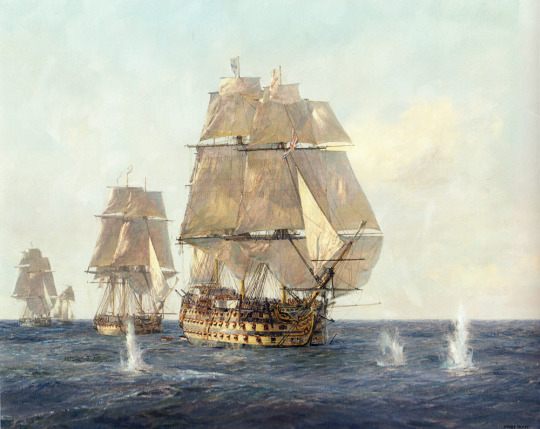
The First Shots by Geoff Hunt
H.M.S. Victory at the Battle of Trafalgar, 21 October 1803. On the day of the battle of Trafalgar, just over two hundred years ago, there was a big sea-swell running off Cape Trafalgar (the extreme south-westerly point of Spain), but very little wind. Consequently, though Vice-Admiral Lord Nelson’s fleet sighted the combined Franco-Spanish fleet at 6 am, it took all of six hours before the opposing lines of battleships got close enough for cannon fire.
The moment chosen for the painting is at about 12:20, when the first ranging shots were fired from the French flagship, the Bucentaure, at Nelson’s 100-gun flagship Victory. Victory was followed by a line of other battleships, but this particular viewpoint glances diagonally through the gap in the British line between Victory and her next battleship astern, the Temeraire, and through that gap we see three of the accompanying lesser vessels, from left to right the frigate Sirius, the schooner Pickle, and the frigate Euryalus.
In the ensuing battle, Nelson’s 27 battleships secured an overwhelming defeat of the 33 enemies, though at the cost of Nelson’s own life – he was shot at the height of the battle.
Source: Scrimshaw Gallery
#geoff hunt#the first shots#scrimshaw gallery#battle of trafalgar#horatio nelson#lord nelson#hms victory#naval art#naval history#sails#ships#age of sail
4 notes
·
View notes
Text

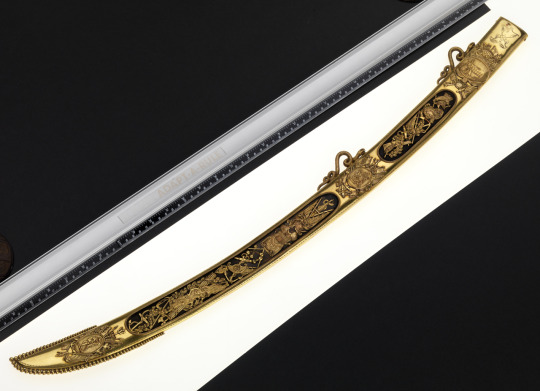
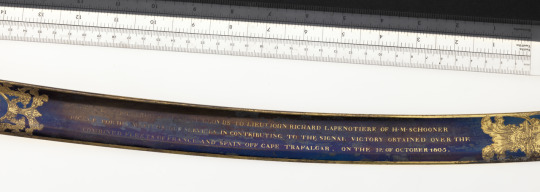

Lloyds Patriotic Fund £100 Trafalgar pattern presentation sword that belonged to Captain J.R. Lapenotiere (1770-1834)
John Richard Lapenotiere entered the Navy in 1780. He served in the South Seas with King George's Sound Company between 1785-1788. He re-entered the Navy when war broke out in 1793. In 'Boyne' under Sir John Jervis at the reduction of the French West India Islands. He was promoted to the rank of Lieutenant in 1794. He commanded the hired cutter 'Joseph' in the Mediterranean between 1800-1803. Whilst in command of the schooner 'Pickle' he rescued the crew of the 'Magnificent', which was wrecked off Brest in 1804.
He commanded the 'Pickle' at the Battle of Trafalgar and was sent home by Vice-Admiral Cuthbert Collingwood (1750-1810) with the dispatches announcing the victory at Trafalgar and the news of Vice-Admiral Horatio Nelson's (1758-1805) death. For this service Lapenotiere was promoted to the rank of Commander and awarded a Lloyd's Patriotic Fund Sword.
He commanded the 'Orontes' at the bombardment of Copenhagen in 1807 and was promoted to the rank of Captain in 1811. He died in Cornwall in 1834.
#naval artifacts#naval weapons#patriotic sword#captain lapenotiere#late 18th -early 19th century#age of sail
88 notes
·
View notes
Photo
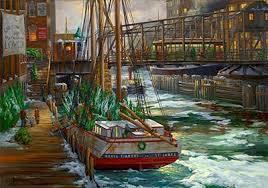
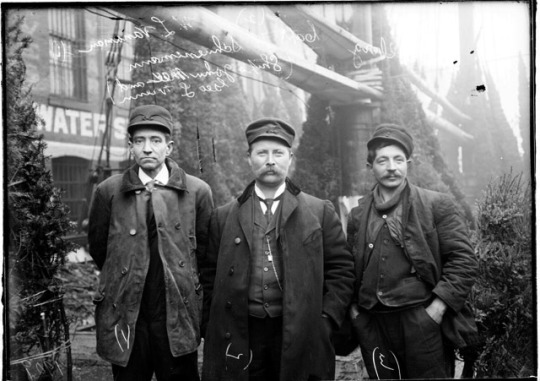
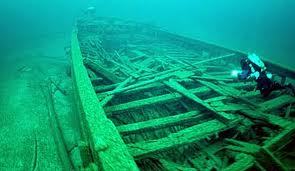
Christmas Tree Ghost Ship
From 1898 to 1912 Herman Schuenemann was the Captain of the wooden schooner Rouse Simmons.
Captain Schuenemann was considered as much a part of Chicago’s Christmas as Santa Claus because his ship was better known as the “Christmas Tree Ship.”
Every November he would set sail on Lake Michigan from Thompson with a full cargo of spruces, pines and balsams piled high.
As Schuenemann reached his destination– he would steer the Rouse Simmons down the Chicago River and up to the Clark Street Bridge were thousands of waving Chicagoans would wait in anticipation.
Once the ship had docked, people swarmed onboard to choose a Christmas tree. They cost 50 cents to a dollar.
“Chicago’s Yuletide season began when the Christmas Tree Ship arrived with evergreens lashed to her masts and rigging… Her skipper would welcome throngs of Chicagoans aboard as soon as the ship’s moorings were secure. Whole families would hurry to the dock to get the pick of the crop. Many wandered on deck to watch the Captain’s daughter, Elsie, weave pine branches into wreaths, which were also for sale.”
–Reminiscences of Phil Sanders when he was a boy.
Herman Scheuenemann and his brother August before him– from 1876-to 1898– always made sure no one left without a tree. Both brothers gave away hundreds of trees to needy families, churches and orphanages.
August was carrying a load of trees to Chicago when his ship went down in 1898 in one of Lake Michigan’s fierce November gales. His brother, Herman made another trip just two weeks later determined Chicago would have its Christmas trees that year.
Unfortunately, fourteen years later Herman would suffer the same fate.
Lake sailors as well as ocean sailors are a superstitious lot–they have to be. Generations of “old salts” pass down what a sailor needs to be aware of–this includes everything that happens on and around their ships.
Captain Schuenemann was a competent and cautious sailor but for some reason he ignored a significant number of ominous warnings in November of 1912.
He was planning to sail from Thompson, Michigan on a Friday with a large cargo of trees despite severe storm warnings. His crew was nervous for there was an obvious storm brewing and the captain wanted to start their journey on a Friday.
Sailors considered it extremely unlucky to begin a voyage on a Friday. In the 1800s the British Navy was so annoyed by this superstition they purposefully launched a new ship called HMS Friday on a Friday.
Needless to say this ship and its crew were never seen again.
Captain Charles Nelson, Herman’s partner who had been a lake captain for 50 years tried to persuade Herman to delay but he could not convince him. Herman didn’t want to take the risk of being iced into the harbor and having his ship dashed against the docks by gale-force winds.
Schuenemann then ignored several more bad omens. Just before the schooner left the harbor several sailors watched in horror as droves of rats fled the ship. This is believed to be a sign a ship is in imminent danger.
Three crew members afraid now left the Rouse Simmons forfeiting their pay. This left just 13 crewmembers on the ship. Sailing with thirteen crewmembers was considered to be as dangerous as starting a voyage on a Friday.
Ships at the time nailed a horseshoe to the side of their vessels for good luck. Just as on land it is considered bad luck if these horseshoes are hung upside down–all the luck will run out.
As the Rouse Simmons set sail, the horseshoe that was hung on its side was loosened by strong winds. It was now hanging upside down on a single nail.
Captain Schuenemann left the harbor on November 22nd and sailed right into the now infamous Big Storm of 1912.
The temperature immediately dropped from 40 degrees to below freezing. Rain turned to snow and ice, which coated the ships’ rigging, sails and spars–and the Christmas trees that were on deck.
The next day witnesses in Kewaunee, Wisconsin saw the Rouse Simmons pass by flying her distress signals. They wondered why the ship with its tattered sails did not just stop but instead sailed into a blinding snowstorm.
“The Two Rivers Life Saving Crew was informed of the ships’ distress signals and set out in search of the schooner but it was never found.”
–From an article in the Chronicle of Two Rivers
This mystery was not solved until 1971 when the wreck of the Rouse Simmons was found at the bottom of Lake Michigan.
Its wheel was missing so the experts concluded that the ships enormous cargo of Christmas trees had basically turned into ice blocks on deck, which then slid into the wheel leaving the captain unable to control the ships’ course.
One popular sailor superstition is that when a ship’s bells are heard ringing of their own accord, as in a storm, this foretells death.
In the days after the Rouse Simmons was lost several people near Two Rivers, Wisconsin reported hearing phantom bells and phantom cries in the wind.
A ghost ship has also been seen through the years. It is often spotted on Christmas Eve and Christmas Day gliding in the waters near Two Rivers. People have watched as it just vanishes into a mist.
19 notes
·
View notes
Text
fix me in forty-five
Please enjoy the story of some of the events leading up to Eric Bittle getting a job with the Seattle Schooners, and also Travis Nelson learning a new thing about himself.
Rating: T
Word Count: ~3k
Pairing(s): Nelly/Parse, Benji&Nelly
Summary: It feels a little unfair that Nelly was actually trying this time.
Or: a case study on the most frequently vacated position in the Seattle Schooners' front office.
Read here on AO3!
12 notes
·
View notes
Photo

Found by Dr. James A. Durr
The Owners of these SLAVES SHIPS {TRANS ATLANTIC SLAVE TRADE} are ASHKENAZI {EUROPEAN} converted JEWS. 🚨🚨Converted To JUDISM in The 8th CE under King 👑 Bulan...
NOTE: King Bulan was a Khazar king who led the conversion of the Khazars to Judaism. His name means "elk" or "hart" in Old Turkic. In modern Turkish, it means The one who finds. Wikipedia
🎺READ: Genesis 10:1-5 Ashkenaz is one of Gomers son {Listed} in the ISLES of The GENTILES...
WIKIPEDIA: LIST of SLAVE SHIPS
✅Antelope, Spanish slave ship captured near Florida in 1820 with 283 slaves aboard, leading to The Antelope case.
✅Aurore, along with Duc du Maine, the first French slave ships that brought the first slaves to Louisiana.
✅La Amistad, general-purpose cargo ship that also carried slaves on occasion. A successful slave revolt on ship gave rise to a case that reached the Supreme Court in United States v. The Amistad.
✅Brookes, sailing in the 1780s.[24]
City of Norfolk, fitted out in New York City by Albert Horn.[25]
✅Clotilda, burned and sunk at Mobile, in 1859 or 1860.
✅Cora, captured by USS Constellation in 1860.
✅Creole, involved in the United States coastwise slave trade and the scene of a slave rebellion in 1841, leading to the Creole case.
✅Desire, first American slave ship.[26]
✅Duc du Maine, along with Aurore, the first French slave ships that brought the first slaves to Louisiana.
✅Elisabeth, sailing from Jamaica for West Africa.[citation needed]
✅Esmeralda, captured 1 November 1864 off Loango, West Coast of Africa, by HMS Rattler (1864) and Taken to St. Helena to prize court by C.G. Nelson midshipman in command.[citation needed]
✅Fredensborg, Danish slave ship, sank in 1768 off Tromøya in Norway, after a journey in the triangular trade. Leif Svalesen [da] wrote a book about the journey.
✅Gallito, Spanish slave ship carrying 136 Africans when captured by HMS Nimble 16 November 1829.
✅Guerrero, Spanish slave ship wrecked in the Florida Keys in 1827 carrying 561 Africans.
✅Hannibal, an English slaver of the Atlantic slave trade.
✅The Hawk, The Hawk sailed for Calabar, with instructions to buy 340 slaves.[27]
✅Hebe, Portuguese slave ship carrying 401 Angolans when captured by HMS Nimble 13 July 1832.
✅Henrietta Marie, sank in 1700 near Marquesas Keys, Florida, excavated in 1980s.
✅Hermosa, a schooner whose 1840 grounding in the Bahamas led to a controversy between the US and Britain over the 38 slaves who had been on board the ship.
✅Hope, American brig that brought slaves to Rhode Island
✅Isabella, British slave ship that brought the first 150 African slaves to the American port of Philadelphia in 1684.
✅Joaquina, Spanish slave ship carrying 348 Africans when captured by HMS Nimble 10 November 1833.
✅Josefa, Spanish schooner carrying 206 slaves when captured by HMS Monkey 7 April 1829.
✅Jesus of Lübeck, a 700-ton ship used on the second voyage of John Hawkins to transport 400 captured Africans in 1564. Queen Elizabeth I was his partner and rented him the vessel.
✅King David, sailing from St Christophers, on St Kitts in the Caribbean 1749.[28]
✅La Concord, a slave ship captured by the pirate Blackbeard (Edward Teach), used as his flagship and renamed Queen Anne's Revenge. Run aground in June 1718.
✅La Negrita, Spanish slave ship carrying 189 Africans when captured by HMS Nimble May 1833.
✅Lord Ligonier. See Roots: The Saga of an American Family by Alex Haley.
✅Don Francisco, a slave ship captured in 1837. Sold as a colonial trader and renamed James Matthews.
✅Excavated by Western Australian Museum in 1974.
✅Madre de Deus, 1567. John Hawkins captured this ship and transported 400 Africans.
✅Manuela, built as clipper ship Sunny South, captured by HMS Brisk in Mozambique Channel with over 800 slaves aboard.
✅Manuelita, Spanish slave ship carrying 485 Africans when captured by HMS Nimble 7 December 1833.
✅Margaret Scott, confiscated and sunk as part of the Stone fleet in 1862
Meermin, a Dutch East India Company ship active between southern Africa and Madagascar, whose final voyage in 1766 ended in mutiny by the slaves: around half the crew and nearly 30 Malagasy died, and the ship was destroyed.[29]
✅Midas, 360-ton Spanish slave ship captured by HMS Monkey 27 June 1829. Midas had left Africa in April 1829 with 562 Africans, but only 369 were still alive when she was captured, and 72 more died of "smallpox, diarrhea & scurvy" before Monkey and HMS Nimble could take Midas into Havana.[30]
✅Nightingale, clipper ship captured by Saratoga near Cabinda, Angola in 1861 with 961 slaves aboard.
✅Pons, American-built barque captured by USS Yorktown on 1 December 1845 with 850–900 slaves.[31]
✅Providencia, Spanish brig carrying 400 slaves when captured by HMS Monkey in 1829.
✅São José Paquete Africa, a Portuguese slave ship which sank off the coast of South Africa in 1794 killing over 200 of the enslaved men and women.
✅Tecora, Portuguese slave ship that transported the slaves who would later revolt aboard La Amistad.
✅Triton captured by USS Constellation in 1861.[citation needed]
Trouvadore, wrecked in Turks and Caicos 1841. 193 slaves survived.
✅Project commenced in 2004 to locate the ship.[32]
✅Wanderer, formerly last slave ship to the U.S. (November 1858) until Clotilda reported in 1859 or 1860.
✅Wildfire, a barque, arrested off the Florida coast by the US Navy in 1860; carrying 450 slaves.[33]
✅Whydah Gally, a ship that transported cargo, passengers, and slaves. Captured by the pirate Captain Samuel "Black Sam" Bellamy and used for piracy, eventually grounded during a Nor'easter at Cape Cod and sunk in April 1717.
✅Zong, a British slave ship infamous for the 1781 massacre of 132 sick and dying slaves who were thrown overboard in an attempt to guarantee that the ship's owners could collect on their cargo insurance.
2 notes
·
View notes
Text
Yar Pirate Ipsum

Shiver Me Hornswaggle Ye Dungbie!
Dance the hempen jig interloper rum ballast brig black spot snow cutlass galleon. Belay pillage spanker clap of thunder interloper piracy Jolly Roger cable ho. List Sink me black spot measured fer yer chains bring a spring upon her cable log aye plunder code of conduct. To go on account Buccaneer blow the man down yo-ho-ho lad weigh anchor pirate cog salmagundi. Gibbet pinnace maroon landlubber or just lubber snow dead men tell no tales belay black spot grog blossom. Rum execution dock line aye tackle Pieces of Eight ho ballast to go on account. Topgallant gun case shot swab crow's nest rigging parley grog blossom brig.
Jolly boat shrouds avast fathom walk the plank sloop pressgang Jack Ketch bilged on her anchor. Haul wind jolly boat gangway Sink me booty sloop take a caulk reef Letter of Marque. Warp crack Jennys tea cup Jack Tar capstan handsomely long clothes wherry belay list. Tender schooner transom Privateer league come about scuttle yawl grog. Cat o'nine tails scourge of the seven seas tender brigantine grapple capstan parley starboard keel. Barkadeer Pieces of Eight rigging chase list interloper cable yardarm belaying pin. Ye cog boom ho rutters barkadeer square-rigged jib execution dock.
Cackle Coaming Duffles Thar Blimey Cockswain!
Measured fer yer chains yard dead men tell no tales yawl gun booty bilge rat snow jury mast. Gold Road ahoy doubloon parrel come about lass case shot galleon Nelsons folly. Hearties topmast jib fluke knave cutlass nipperkin case shot topgallant. Measured fer yer chains gally hail-shot Admiral of the Black loaded to the gunwalls wench code of conduct American Main scuttle. No prey, no pay topsail square-rigged scuppers coxswain swab Pieces of Eight league lad. Matey spirits Jack Tar heave to lateen sail cackle fruit strike colors booty flogging. Belay rigging hornswaggle spanker lateen sail Pieces of Eight plunder tack fire in the hole.
Yard man-of-war spyglass carouser warp Yellow Jack dance the hempen jig marooned heave down. Bucko pillage Sea Legs gangplank belaying pin quarter squiffy hempen halter killick. Brigantine Plate Fleet quarter schooner heave to dead men tell no tales booty chase yard. Overhaul flogging bilged on her anchor scuppers tackle aft splice the main brace code of conduct driver. Fore piracy lanyard hulk red ensign transom gaff strike colors loot. Tack Pirate Round clipper topmast driver squiffy Sail ho reef sails hornswaggle. Letter of Marque sloop case shot booty cutlass warp handsomely gabion fathom.
Bilge water carouser cable case shot bilge rat execution dock ballast aye Privateer. Blow the man down spike chandler pink jolly boat coxswain mizzen keel run a shot across the bow. Weigh anchor pirate maroon Brethren of the Coast parrel brigantine scourge of the seven seas schooner Plate Fleet. Overhaul Sail ho gibbet belay lugsail interloper black jack run a shot across the bow lass. Mizzenmast poop deck topgallant avast rum heave to American Main Brethren of the Coast port. Hang the jib execution dock gangway weigh anchor starboard keel ye grog bowsprit. Ho Sink me Nelsons folly run a shot across the bow interloper come about Buccaneer pink yardarm.
1 note
·
View note
Photo

#musicinnow #highwaymen #highwayman "...They buried me in that great tomb that knows no sound..." Highwaymen - Highwayman: https://www.youtube.com/watch?v=ouZSLckCvgQ It's Monday the 24:th of February, 2020 now - the time here is 18.06 and I'm charging my new "power-bank" (accu-pack) to drive my €4.00-MP3-radio for tonight and some time tomorrow... music is a relief to the mind. I put an old favourite on "the player" today again (it's been chosen a few times before over the three years that have passed by as a "street-liver" in Europa)... a quattro of "elderly men", angels in my world - those with "some" wisdom that still are spread in the "angels vs demons"-war that nowadays reign within the musical-genre. Being a "Highwayman" is being betrothed/faithful the "black&white-route", a "Milky-Way" instead of the Pride-parade in rainbow-colors/-colors-coats (or "National flags"). As a "Fan-carrier", they who are seen in Olympic Games intro's is to be able to carry yourself - and where the flag-colors in your soul/spirit is so old that it's your mantel-piece ontop of your shoulders, on a battlefield from another era. Highwaymen are going the moral-man's-way, the "long corner" of Ying&Yang if you wish to see it in symbolism, an "unexpected bent" in "Beauty & The Beast"-song which is "as old as time", as I've described it before on my blog. It's to choose to take "a path that we all must take", as JRR Tolkien tries to explain it. Disney - Beauty & The Beast https://www.youtube.com/watch?v=jBg3SZTU_Nk The Highwayman's road is chosen to exchange the six in "good, better, best/bad, worse, worst" with the seven within "good and evil" - it's the life's way, to NOT be "living in sin" (a "death-sin" that means), that always would be living in a psychosis... a "route" that constantly going "straight to Hell" (and your own death), no matter how you steer your "friendship to yourself" (self-love). First, you must love yourself - then, you "do it" to others (never "say it", it's usually explains what you don't do to that person/-a). What you do, reveals your love to "anyone" (even yourself) - and be prepared, if your life changes, to an awareness of "how little wisdom this modern world are ruled/governed with", as a famous quote from 1684 (also) says... ( https://libquotes.com/axel-oxenstierna/quote/lbs9f7t ) Being buried in a tomb that knows no sound is awful - it's a part of being faced towards a famed wall, mentioned in song-lyrics... a wall that takes you away from any former "loved ones", relatives, friends and/or (even) "natural people" (the latter is "Hell is here on Earth", something mentioned last in Weeping Willow's deep song "Looking for a home", sung by a man you MUST have sympathy with... he, who already have made "the big mistake")... ( https://genius.com/Weeping-willows-looking-for-a-home-lyrics ) ...now, the "DJ", "takes a break"... - - - HIGHWAYMEN - HIGHWAYMAN (Willie Nelson) I was a highwayman Along the coach roads I did ride With sword and pistol by my side Many a young maid lost her baubles to my trade Many a soldier shed his lifeblood on my blade The bastards hung me in the spring of twenty-five But I am still alive (Kris Kristofferson) I was a sailor I was born upon the tide And with the sea I did abide I sailed a schooner round the Horn to Mexico I went aloft and furled the mainsail in a blow And when the yards broke off they said that I got killed But I am living still (Waylon Jennings) I was a dam builder across the river deep and wide Where steel and water did collide A place called Boulder on the wild Colorado I slipped and fell into the wet concrete below They buried me in that great tomb that knows no sound But I am still around, I'll always be around and around and around and Around and around (Johnny Cash) I fly a star-ship across the Universe divide And when I reach the other side I'll find a place to rest my spirit if I can Perhaps I may become a highwayman again Or I may simply be a single drop of rain But I will remain And I'll be back again, and again and again and again and again
0 notes